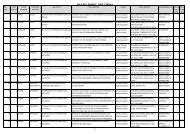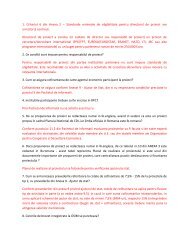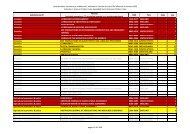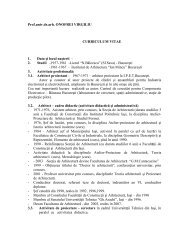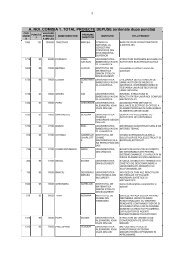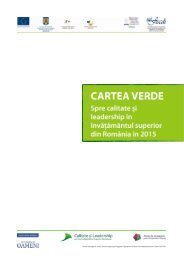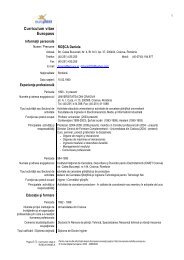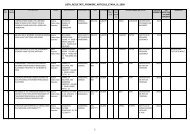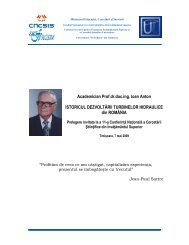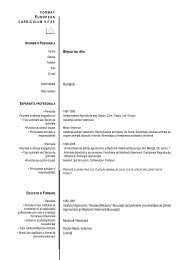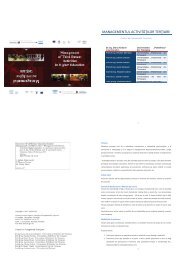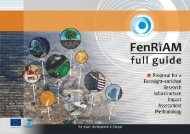Modul de formare-Managementul resurselor financiare - uefiscdi
Modul de formare-Managementul resurselor financiare - uefiscdi
Modul de formare-Managementul resurselor financiare - uefiscdi
- No tags were found...
You also want an ePaper? Increase the reach of your titles
YUMPU automatically turns print PDFs into web optimized ePapers that Google loves.
Economic goods = Rights + Obligations<br />
Wealth = Capital<br />
Wealth = Funds<br />
Asset - Debts = Equity<br />
E<br />
Revenues-Expenses=Result<br />
Changes in net assets = The net<br />
assets from "n" - The net asstes<br />
from "n-1"<br />
Permanent resources – Permanent<br />
utilizations = Temporary utilizations<br />
– Temporary resources<br />
Figure. 5.3. Accounting main equations<br />
The financial-accounting information, presented through these equations, will represent the<br />
"database" of university management in <strong>de</strong>cision making, by i<strong>de</strong>ntifying the rules to be followed<br />
in <strong>de</strong>cision making 30 :<br />
The rule of Estimated Monetary Value - The estimated monetary value is calculated as a<br />
weighted average of the results (expressed in currency) with the probabilities of each of<br />
these results. Thus, the basis for the <strong>de</strong>cision to follow these steps are: target selection,<br />
i<strong>de</strong>ntification of possible actions, i<strong>de</strong>ntification of relevant events, <strong>de</strong>termining the<br />
likelihood of achieving the relevant events, and i<strong>de</strong>ntifying possibile results in case of each<br />
relevant event.<br />
The Maximin rule - is a preventive <strong>de</strong>cision rule based on maximizing the minimization of<br />
loss that can occur (the best of bad options)<br />
The Maximax rule - is an optimistic <strong>de</strong>cision rule based on maximizing the maximum that<br />
<br />
Asset – Liabilities = Patrimony Net Assets<br />
can be obtained (the best of the best options).<br />
The Regret Minimization rule – it is the rule of <strong>de</strong>cision that involves minimizing the regret<br />
(loss of the opportunity by taking a <strong>de</strong>cision, un<strong>de</strong>r certain conditions) that would result<br />
from choosing a certain strategy.<br />
By selecting the optimal choice in the <strong>de</strong>cision making, the financial manager of the university<br />
will have to present to the Rector and the University Senate Office the financial-accounting<br />
information with regard to historical cost accounting and current values accounting (accounting<br />
for inflation), un<strong>de</strong>r the conditions of currency <strong>de</strong>preciation in which were expressed the facts<br />
and economic processes un<strong>de</strong>rtaken in the past, and the following ones.<br />
We argue on that point by revealing the advantages and disadvantages of the historical cost<br />
accounting and fair value accounting.<br />
Historical cost accounting<br />
Advantages<br />
Disadvantages<br />
30 Budugan D., Georgescu I., Berhea I., Beţianu L., „Contabilitate <strong>de</strong> gestiune”, Ed. CECCAR, Bucureşti, 2007, pp.<br />
390-392<br />
51



